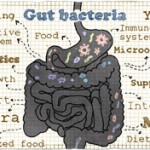
Research is showing the potential role of infectious agents in rheumatic diseases.
science photo/shutterstock.com
CHICAGO—Medicine is in the middle of an infectious-disease “revolution” that seems almost destined to lead to prevention through immunization of many diseases, including rheumatic illnesses, that never were previously thought to involve transmissible agents, an infectious disease specialist said in a session at the ACR’s 2016 State-of-the-Art Clinical Symposium.
An array of unlikely and fascinating connections between infections and diseases have been discovered over the past several decades—links of viruses and cancer, the discovery that the key to peptic ulcer disease isn’t acid, but the bacterium Helicobacter pylori, to name a couple of examples. And the rate of research in this area is mushrooming, said Bennett Lorber, MD, MACP, professor of medicine at the Lewis Katz School of Medicine at Temple University.
A Paradigm Shift

Dr. Lorber
“There’s been a giant paradigm shift in our understanding of the relationship between microorganisms and human beings,” said Dr. Lorber, who himself is barely able to contain his excitement at some of the amazing findings. “We’re in the middle of a scientific revolution.”
One of the more incredible discoveries was the Nobel Prize-winning discovery that what appeared to be a neurodegenerative disease, Kuru, in people who live in the highlands of Papua New Guinea, was actually a transmissible disease with an incubation period of years or decades. The highlanders honor their dead by eating them, and the disease was being transmitted this way: Those who prepared or ate the brains of the dead had the highest rates of attack.
Spongiform encephalopathies, like Kuru, are caused by tiny bits of protein with no nucleic acid, or prions, a discovery so contrary to conventional science it was “heretical,” Dr. Lorber said. The discovery won Stanley Prusiner, MD, the Nobel Prize in 1997.
In PANDAS—pediatric autoimmune neuropsychiatric disorder associated with streptococcal infections—children who get strep throat within two months have a dramatic onset of obsessive compulsive disorder, and those with OCD suddenly worsen. Penicillin prophylaxis helps with this, Dr. Lorber said.
Infectious Agents
The potential role of infectious agents can be seen in rheumatic diseases, as well.
People with rheumatoid arthritis have periodontal diseases more often, and worse cases of it, than controls. The major cause of periodontitis is the bacterium Porphyromonas gingivalis, which produces arginine proteinases that it needs in order to live in gingival crevices. One of these proteinases, peptidylarginine deiminase, coverts arginine to citrulline. Of course, people with RA have antibodies to cyclic citrullinated peptides.1
“Porphyromonas gingivalis is the only bacterium known to do that,” Dr. Lorber said. “The idea here is that this organism, in genetically susceptible individuals, makes citrullinated antigens that then serve as systemic immunogens, resulting in rheumatoid arthritis.”
The Microbiome
Research in heart disease has found that, after inoculating human cells with Chlamydophila pneumonia, the bacterium up-regulates genes with important pro-inflammatory functions, including those associated with atherosclerosis.
Another shift is occurring, too, Dr. Lorber said. Ever since anthrax was proved to be caused by bacteria, more than a hundred years ago, there was a belief that one disease was caused by one organism. But that might not always be the case, new evidence is showing.
“It may not be one organism,” Dr. Lorber said. “It may be populations of organisms or relative proportions of populations. So maybe it’s not infection in the traditional sense. Maybe it’s an imbalance of the microbiome,” or “dysbiosis.”
For example, using new tools, such as 16S sequencing—a way to assess the taxonomy in difficult-to-study microbiomes—in people with RA and in controls, researchers have found that the presence of Prevotella copri bacteria, with an associated reduction in the normal Bacteroidetes population, is correlated strongly with new onset of RA.2
Scientists are also shedding light on the so-called “gut–brain axis,” signaling in which the gut talks to the brain through neural mechanisms, including the vagus nerve, as well as endocrine mechanisms, immune mechanisms and metabolic mechanisms.
Germ-free mice that are deliberately stressed develop higher levels of stress hormone, as well as lower levels than normal mice of a brain protein that modulates synaptic growth and transmission.3
“If you recolonize with normal mice gut flora, you can reverse that and they lower levels of stress hormones,” Dr. Lorber said.
Obese people, researchers have found, have more Bacteroidetes and fewer Firmicutes than controls who are lean.4
“It turns out that obese individuals who complain all the time (that), ‘I ate the same thing you ate—why don’t you get fat?’ may have a good explanation,” Dr. Lorber said. “They may have more efficient energy harvesting from what they eat.”
‘I think it’s very likely that as time goes by we will establish firmer links between transmissible agents & chronic illness. That’s exciting because it opens the opportunity for prevention through immunization.’ —Bennett Lorber, MD, MACP
Future Possiblities
All of these discoveries are cause for great optimism, he said.
“I really think we may soon be treating neuropsychiatric disorders with probiotics,” Dr. Lorber said. “The hard part is being able to figure out which probiotic is going to do the trick. But just imagine this.
“Who would have imagined 30 years ago that we’d be curing ulcers with antibiotics?” Dr. Lorber said. “I think it’s very likely that as time goes by we will establish firmer links between transmissible agents and chronic illness. And that’s exciting because it opens the opportunity for prevention through immunization.”
Thomas R. Collins is a freelance medical writer based in Florida.
Reference
- Liao F, Li Z, Wang Y, et al. Porphyromonas gingivalis may play an important role in the pathogenesis of periodontitis-associated rheumatoid arthritis. Med Hypotheses. 2009 Jun;72(6):732–735.
- Scher JU, Sczesnak A, Longman RS, et al. Expansion of intestinal Prevotella copri correlates with enhanced susceptibility to arthritis. Elife. 2013 Nov 5;2:e01202.
- Sampson, TR, Mazmanian SK. Control of brain development, function, and behavior by the microbiome. Cell Host Microbe. 2015 May 13;17(5):565–576.
- Turnbaugh PJ, Ley RE, Mahowald MA, et al. An obesity-associated gut microbiome with increased capacity for energy harvest. Nature. 2006 Dec 21;444(7122):1027–1031.


